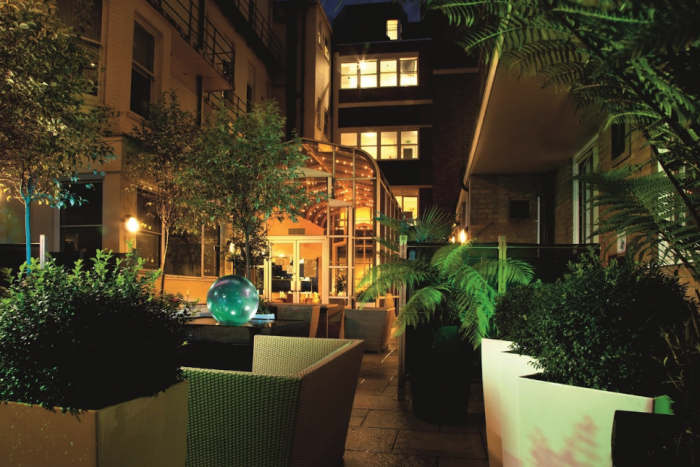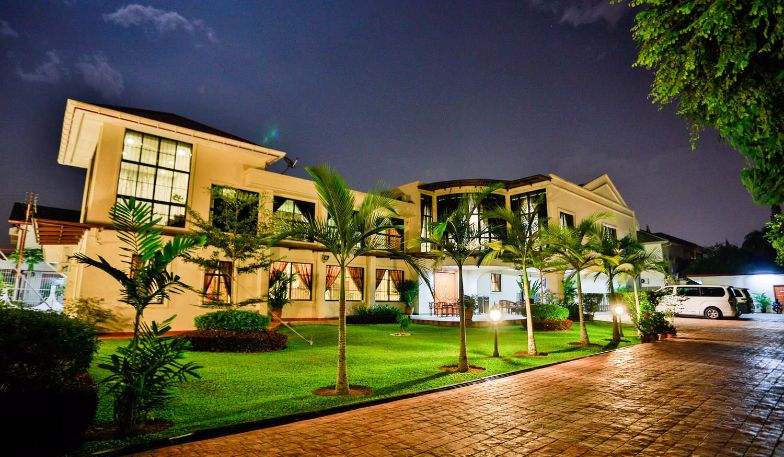Depression is debilitating, and finding adequate treatment is a deeply personal experience. Because every person’s experience is unique, what works for some may not work for others. Mindfulness-based cognitive therapy (MBCT) is one promising treatment method that may work for you. This form of therapy takes elements from mindfulness training and cognitive behavioral therapy and combines them to combat depression.
Depression is downright exhausting, and the symptoms can be difficult to manage—especially if they interfere with daily life. You may even decide to attend rehab to help you learn to manage your condition. And fortunately, there are many rehab centers that offer mindfulness-based cognitive therapy to treat your depressive symptoms.
What Is Mindfulness-Based Cognitive Therapy?
Mindfulness-based cognitive therapy (MBCT) ((Tickell, A., Ball, S., Bernard, P., Kuyken, W., Marx, R., Pack, S., Strauss, C., Sweeney, T., & Crane, C. (2020). The effectiveness of mindfulness-based cognitive therapy (Mbct) in real-world healthcare services. Mindfulness, 11(2), 279–290. https://doi.org/10.1007/s12671-018-1087-9)) is a group-based therapy originally developed to prevent depression from recurring. Because it was so effective, therapists now use it to treat active symptoms, too.
Mindfulness
Mindfulness techniques ((Parmentier, F. B. R., García-Toro, M., García-Campayo, J., Yañez, A. M., Andrés, P., & Gili, M. (2019). Mindfulness and symptoms of depression and anxiety in the general population: The mediating roles of worry, rumination, reappraisal and suppression. Frontiers in Psychology, 10, 506. https://doi.org/10.3389/fpsyg.2019.00506)) teach people to focus on the present moment. You learn to notice your thoughts, emotions, and experiences without judgment. Mindfulness is beneficial for overall health and well-being, and it reduces depression. And practicing mindfulness ((Hey, health coach: What is mindfulness and how can i do it? (2021, November 30). Forbes Health. https://www.forbes.com/health/mind/how-to-practice-mindfulness/)) can help you learn how to take life’s curveballs in stride. As Jon Kabat-Zinn, founder of the Stress Reduction Clinic and the Center for Mindfulness in Medicine, describes it, “You can’t stop the waves, but you can learn to surf.”
Cognitive Behavioral Therapy
Just like mindfulness, cognitive behavioral therapy is also effective in treating depression. ((Gautam, M., Tripathi, A., Deshmukh, D., & Gaur, M. (2020). Cognitive behavioral therapy for depression. Indian Journal of Psychiatry, 62(Suppl 2), S223–S229. https://doi.org/10.4103/psychiatry.IndianJPsychiatry_772_19)) People with depression usually have automatic negative thought patterns, which can trigger or worsen their symptoms. CBT shows people how to identify and reframe these negative thoughts and behaviors into positive ones. This empowers people to do something about their symptoms, which gives them a sense of control.
Connecting Mindfulness and CBT
MBCT fuses aspects of mindfulness and CBT ((Wang, J., Ren, F., Gao, B., & Yu, X. (2022). Mindfulness-based cognitive therapy in recurrent mdd patients with residual symptoms: Alterations in resting-state theta oscillation dynamics associated with changes in depression and rumination. Frontiers in Psychiatry, 13. https://www.frontiersin.org/articles/10.3389/fpsyt.2022.818298)) to create a hybrid treatment model. Just like in CBT, patients learn to notice and free themselves from negative thought patterns. The therapist teaches patients to instead observe their thoughts and emotions in a compassionate, non-judgmental manner. MBCT incorporates mindfulness techniques, like meditation, alongside CBT.
What to Expect During MBCT Sessions
MBCT usually lasts for 8 weeks, ((Seshadri, A., Orth, S. S., Adaji, A., Singh, B., Clark, M. M., Frye, M. A., McGillivray, J., & Fuller-Tyszkiewicz, M. (2021). Mindfulness-based cognitive therapy, acceptance and commitment therapy, and positive psychotherapy for major depression. American Journal of Psychotherapy, 74(1), 4–12. https://doi.org/10.1176/appi.psychotherapy.20200006)) with weekly sessions of about 2 hours. MBCT is administered in a group setting of 8 to 12 people. During meetings, patients participate in attention training activities for mindfulness. These may include body scan exercises or meditations. The goal is to help you become more aware of your thoughts, feelings, and physical sensations. Patients learn to recognize negative thought patterns and practice acceptance, and complete homework assignments around these concepts. These activities help alleviate symptoms from depression.
How Does This Therapy Work for Depression?
MBCT can reduce depression and decrease the risk of relapse (meaning, it reduces the likelihood that symptoms will come back after treatment). In fact, evidence shows that in some cases, it works just as well as antidepressant medication. According to one study on the effects of mindfulness-based cognitive therapy on depression symptoms, ((Tickell, A., Byng, R., Crane, C., Gradinger, F., Hayes, R., Robson, J., Cardy, J., Weaver, A., Morant, N., & Kuyken, W. (2020). Recovery from recurrent depression with mindfulness-based cognitive therapy and antidepressants: A qualitative study with illustrative case studies. BMJ Open, 10(2), e033892. https://doi.org/10.1136/bmjopen-2019-033892)) “There is evidence from at least nine clinical trials… that MBCT reduces the risk of relapse to depression when added to usual care, and demonstrates comparable efficacy to maintenance antidepressant medication.”
There are many reasons why MBCT is so effective at treating depression. ((Tickell, A., Byng, R., Crane, C., Gradinger, F., Hayes, R., Robson, J., Cardy, J., Weaver, A., Morant, N., & Kuyken, W. (2020). Recovery from recurrent depression with mindfulness-based cognitive therapy and antidepressants: A qualitative study with illustrative case studies. BMJ Open, 10(2), e033892. https://doi.org/10.1136/bmjopen-2019-033892)) People learn skills that they can use in the real world, and empathize with each other. The following are concepts that MBCT can teach people to set them up for success in life after rehab.
A Greater Sense of Control
MBCT helps people feel more in control of their depression—and their lives. Learning how depression works gives patients a better understanding of their overall experience. And practicing the techniques to counteract their symptoms is empowering. It helps people feel like they have more power over their thoughts and feelings.
Mandy, a patient in an MBCT study on recurrent depression, ((Tickell, A., Byng, R., Crane, C., Gradinger, F., Hayes, R., Robson, J., Cardy, J., Weaver, A., Morant, N., & Kuyken, W. (2020). Recovery from recurrent depression with mindfulness-based cognitive therapy and antidepressants: A qualitative study with illustrative case studies. BMJ Open, 10(2), e033892. https://doi.org/10.1136/bmjopen-2019-033892)) said she learned “how the mind works” which gave her a better insight into her depression. She found the MBCT sessions “so liberating” because they gave her the tools to take control of her mental health. This “toolbox” included things like meditation, recognizing depressive symptoms, and reaching out to social contacts.
Other patients in the same study echoed Mandy’s sentiments. Some participants described it as “a shift from being a ‘helpless victim of circumstance’ to having more ‘control of my feelings and my life.’”
More Incentive to Manage Well-Being
Mindfulness practices are one way to engage in self-care. The techniques that MBCT teaches you serve as important ways of giving back—to yourself. And because people now have this toolbox, they’re more likely to use what they’ve learned to take care of themselves.
Some patients in one study noted that gaining more control over their thoughts, emotions, and behaviors gave them a greater sense of responsibility to manage their overall well-being. ((Tickell, A., Byng, R., Crane, C., Gradinger, F., Hayes, R., Robson, J., Cardy, J., Weaver, A., Morant, N., & Kuyken, W. (2020). Recovery from recurrent depression with mindfulness-based cognitive therapy and antidepressants: A qualitative study with illustrative case studies. BMJ Open, 10(2), e033892. https://doi.org/10.1136/bmjopen-2019-033892)) They felt they could actually do something about it. They mentioned that self-care was no longer an option—instead, it became a necessary component of their routine.
Peer Interactions Are Beneficial
Patients can benefit from being around peers in MBCT group therapy They can share experiences and receive advice. And realizing that other people have the same feelings as them can decrease the shame they feel about their condition.
Some people in the MBCT study were ashamed of their depression and antidepressant use. ((Tickell, A., Byng, R., Crane, C., Gradinger, F., Hayes, R., Robson, J., Cardy, J., Weaver, A., Morant, N., & Kuyken, W. (2020). Recovery from recurrent depression with mindfulness-based cognitive therapy and antidepressants: A qualitative study with illustrative case studies. BMJ Open, 10(2), e033892. https://doi.org/10.1136/bmjopen-2019-033892)) One participant felt “‘inadequate’ or unable to cope with life compared with other people because of their recurrent depression, treating it as a ‘guilty secret.’” Some patients were too embarrassed to admit to their depression or that they were taking medication.
Participants agreed that meeting other people in the group helped normalize their experiences. One participant said that being around others with depression ((Tickell, A., Byng, R., Crane, C., Gradinger, F., Hayes, R., Robson, J., Cardy, J., Weaver, A., Morant, N., & Kuyken, W. (2020). Recovery from recurrent depression with mindfulness-based cognitive therapy and antidepressants: A qualitative study with illustrative case studies. BMJ Open, 10(2), e033892. https://doi.org/10.1136/bmjopen-2019-033892)) “confirmed that I am a human, worthwhile person.” And another said, “I don’t feel any more when I take my pill every morning that there’s something wrong with me.” These interactions with peers helped participants accept their condition—and themselves.
Participating in Hobbies Improves Quality of Life
MBCT sessions teach people the importance of engaging in activities they enjoy. Therapists encourage patients to try new hobbies and pursue old interests. But this isn’t just for fun—it’s backed by science. People with hobbies have overall better mental health, ((Li, Z., Dai, J., Wu, N., Jia, Y., Gao, J., & Fu, H. (2019). Effect of long working hours on depression and mental well-being among employees in shanghai: The role of having leisure hobbies. International Journal of Environmental Research and Public Health, 16(24), 4980. https://doi.org/10.3390/ijerph16244980)) and reduced rates of depression.
Participants in one study said that MBCT reminded them to do what they enjoy ((Tickell, A., Byng, R., Crane, C., Gradinger, F., Hayes, R., Robson, J., Cardy, J., Weaver, A., Morant, N., & Kuyken, W. (2020). Recovery from recurrent depression with mindfulness-based cognitive therapy and antidepressants: A qualitative study with illustrative case studies. BMJ Open, 10(2), e033892. https://doi.org/10.1136/bmjopen-2019-033892))—and to feel excited about life again. One person said, “I rearranged my life so that the things I do now are things that I enjoy and want to do.” And another continued, “I am now making bigger future plans to make my life better and introducing new ventures.”
Better Understanding of Relapse (and How to Prevent It)
In mindfulness-based cognitive therapy, patients learn how to recognize the early warning signs of a depressive relapse. And how to employ MBCT strategies to avoid it.
Some MCBT participants mentioned that they felt less panicked when they did experience negative feelings. They were able to accept their sad feelings, and not immediately assume it was a relapse. One said they felt better equipped to handle mood fluctuations. Instead of getting upset when they felt negative emotions, they told themselves, “Okay, this is how you’re feeling today.”
Limitations of MBCT
MBCT might not work for everyone. Because MBCT is typically a group therapy, you may find it overwhelming if you have severe social anxiety. And for some people, MBCT works best in combination with antidepressants. MBCT alone might not work well enough for everyone—and that’s perfectly alright. The idea here is to try different methods to find what will work best for you.
Healing Your Depression, Mindfully
You are worthy of care, in whatever way works best for you.
This might look like attending rehab, or just seeking MBCT on your own. It’s up to you to determine what your recovery process will look like. If you decide to go to rehab, this could be your chance to take a step back and give yourself much-needed time to heal.
Explore treatment centers that provide MBCT to contact rehab facilities directly and ask about pricing, insurance, virtual tours, and more.
Reviewed by Rajnandini Rathod


















